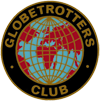Iris, a British lady of considerable character and pluck, is on a 23
week overland expedition from Quito in Ecuador to Caracas in Venezuela.
After this, she plans to do a 3-month voluntary placement in Ecuador,
and then visit Central America for another overland trip between Panama
City and Mexico City, ending up with perhaps another 2-month voluntary
placement somewhere in South America again. This amazing journey will
take Iris one year. Here is an extract from Iris’ journey notebook.
15 of our overland gang left us in Ushaia – not because they had come
to the end of their trip but because they wanted to spend more time in
Ushaia and so, at their own expense opted to stay on in hotels longer
and to fly up to Buenos Aires (BA) in order to spend more time there as
well. They would then join up with us in BA when we arrived there after
spending five days travelling overland.
The remainder of us, 8 including our drivers/tour leaders, then travelled
up to BA in a marathon 3,000 km plus journey, so that most of our time
was spend on the road, with only two short visits to a petrified forest
and a penguin colony to break the monotony and to give us a bit of extra
comfort, we opted to drive further on one particular day so that we could
spend a night in a hotel! The rest of the time was spent in rough camps
along the way!
The petrified forest was in the middle of nowhere. It was very low key,
just a park warden looking after a solitary outpost, guarding relics from
some 5 million years ago and which they considered were the remains of
an enormous forest full of gigantic trees which had suddenly and catastrophically
been buried after several natural disasters and which had miraculously
been uncovered again in subsequent earth movements. It comprised some
enormous trunks lying on the surface of the ground over an extensive area
and looked to this lay person’s eye like the remains from some ancient
logging ground where the chain saws had been removed and the trunks just
left fragmented where they lay. But they were of course now turned to
stone. We arrived in the evening at about 1800 and had about an hour to
walk round and look at these relics, but unfortunately none of us could
really appreciate them because we had such little information as to why
they were considered so significant. There was a museum housing fauna
and flora of the region and depicting the course of events over several
100 million years but as everything was in Spanish and only one sparse
leaflet in English, it was rather disappointing that we did not have a
suitable guide to explain it all to us.
We stayed that night in a really rough camp site, again, in the middle
of nowhere, which seemed frequented more by roaming labourers from local
roadworks rather than the normal tourist place. We lit up a barbecue and
ate good steaks that night, all the food having been purchased in bulk
before leaving Ushaia.
The next day we pressed on, without pause to a place called Rio Gallegos,
eating our lunch on the truck. We prepared it too in the truck on the
move. Because the truck was so empty with just 6 instead of the usual
22 people in the back, it bumped and rattled and lurched over the rough
roads perhaps more than it would have done if it had been fully laden,
and so some accidents did occur with chopped salad etc, as we attempted
to fill baguettes for the lunch-time snack!) But Rio Gallegos, gave us
a welcome respite from camping as we stayed in a hotel that night and
so had the luxury of beds and en suite showers! We went for a meal soon
after booking in, and chose the restaurant on the other side of the road
to the hotel, where family groups were eating three course meals at midnight!
This is the norm in Argentina, as people tend to go out to eat in the
late evening, but not before 2130 and even later!
Our next excursion was to a penguin colony that was situated near a place
called Camarones, where we camped for the night close to the beach. We
spent just an hour and a half at the colony. Penguins breed there and
apparently stay for three years, growing up, before making any sea journeys.
The whole area was full of young penguins, some already moulted, others
younger and still covered in baby fur and all sorts of others in the in-between
state looking as if they had all rescued their coats from moth infested
wardrobes! However, although it was great to walk among them (along a
designated footpath from which we were not allowed to stray) the penguins
ignored this. They were allowed to stray on to the footpath and so we
had a few very interesting encounters, as they are inquisitive birds,
totally unfazed by humans walking around, and so they would pause and
swivel their heads almost through a full 180 degrees to try and focus
on us and work out who we were!
These two visits were the sum total of sightseeing on the 5 days it took
to travel in our overland truck from Ushaia to BA and so we arrived in
that capital city ready for a rest and some comfortable beds!
Next Month, Buenos Aires and Uruguay.
If you’d like to contact Iris, whether to wish her luck with her
trip or to ask questions about her itinerary and places visited, I am
sure she would like to hear from you. She can be contacted on: irisej2002@yahoo.co.uk
